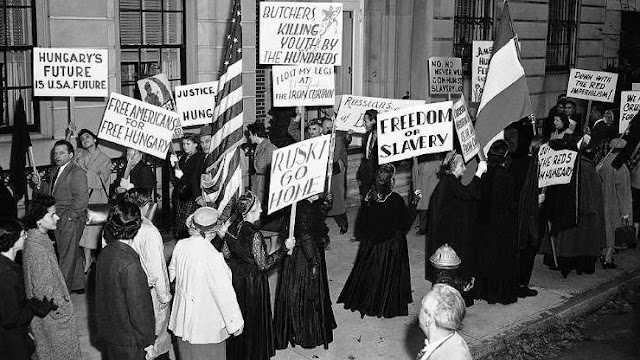News of the fission experiments of Otto Hahn and Fritz Strassmann, and of the Meitner-Frisch calculations that confirmed them, spread rapidly. Meitner and Frisch communicated their results to Niels Bohr, who was in Copenhagen preparing to depart for the United States via Sweden and England. Bohr confirmed the validity of the findings while sailing to New York City, arriving on January 16, 1939. Ten days later Bohr, accompanied by Enrico Fermi, communicated the latest developments to some European émigré scientists who had preceded him to this country and to members of the American scientific community at the opening session of a conference on theoretical physics in Washington, D.C.
American physicists quickly grasped the importance of Bohr's message, having developed an accomplished scientific community of their own by the 1930s. Although involved in important theoretical work, Americans made their most significant contributions in experimental physics, where teamwork had replaced individualism in laboratory research. No one epitomized the "can do" attitude of American physicists better than Ernest O. Lawrence, whose ingenuity and drive made the Berkeley Radiation Laboratory the unofficial capital of nuclear physics in the United States. Lawrence staked his claim to American leadership when he built his first particle accelerator, the cyclotron, in 1930. Van de Graaff followed with his generator in 1931, and from then on Americans led the way in producing equipment for nuclear physics and high-energy physics research.
American scientists became active participants in attempts to confirm and extend Hahn's and Strassmann's results, which dominated nuclear physics in 1939. Bohr and John A. Wheeler advanced the theory of fission in important theoretical work done at Princeton University, while Fermi and Leo Szilard collaborated with Walter H. Zinn and Herbert L. Anderson (see the photograph below) at Columbia University in investigating the possibility of producing a nuclear chain reaction. Given that uranium emitted neutrons (usually two) when it fissioned, the question became whether or not a chain reaction in uranium was possible, and, if so, in which of the three isotopes of the rare metal it was most likely to occur. By March 1940, John R. Dunning and his colleagues at Columbia University, collaborating with Alfred Nier of the University of Minnesota, had demonstrated conclusively that uranium-235, present in only 1 in 140 parts of natural uranium, was the isotope that fissioned with slow neutrons, not the more abundant uranium-238 as Fermi had guessed. This finding was important, for it meant that a chain reaction using the slightly lighter uranium-235 was possible, but only if the isotope could be separated from the uranium-238 and concentrated into a critical mass, a process that posed serious problems. Fermi continued to try to achieve a chain reaction using large amounts of natural uranium in a pile formation. Dunning's and Nier's demonstration promised nuclear power but not necessarily a bomb. It was already known that a bomb would require fission by fast neutrons; a chain reaction using slow neutrons might not proceed very far before the metal would blow itself apart, causing little, if any, damage. Uranium-238 fissioned with fast neutrons but could not sustain a chain reaction (left) because it required neutrons with higher energy. The crucial question was whether uranium-235 could fission with fast neutrons in a chain-reacting manner, but without enriched samples of uranium-235 scientists could not perform the necessary experiments.
The possibility of an atomic explosion alarmed a number of scientists within the United States. Émigré physicists, who had fled their native countries because of the expansion of Nazi Germany, were particularly wary and directed their efforts toward keeping ongoing nuclear research a secret and obtaining governmental support for further research. Science had been built on the free exchange of information, but a group of leading scientists, including Fermi and the Hungarian trio of Szilard, Eugene Wigner, and Edward Teller, convinced most within the American and British scientific community to voluntarily withhold future publication of information that might aid a Nazi atomic bomb program. This attempt at self-censorship largely collapsed, however, when the French physicist Frederic Joliot-Curie refused to cooperate. His determination to publish his own research prompted scientists in other countries to continue to do likewise. Not until late 1940, when the European scientists had succeeded in enlisting government interest and support, did publication on nuclear research generally cease.
 |
| Alumni of the Met Lab pose on the steps of Eckhart Hall on the campus of the University of Chicago on December 2, 1946 (the fourth anniversary of CP-1 first going critical). Front row, left to right: Enrico Fermi, Walter Zinn, Albert Wattenberg, and Herbert Anderson. Middle row, left to right: Harold Agnew, William Sturm, Harold Lichtenberger, Leona W. Marshall, and Leo Szilard. Back row, left to right: Norman Hilberry, Samuel Allison, Thomas Brill, Robert Nobles, Warren Nyer, and Marvin Wilkening. |

































